98 start with C start with C
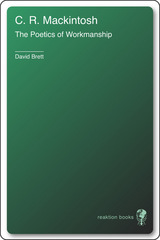
After focusing on the various decorative details and interior spaces of Mackintosh's buildings the author reaches to the heart of Mackintosh's poetic system – the suffused eroticism of the sleek, "feminine" and intensely private "white interiors". A notable feature of this persuasive reappraisal of Mackintosh's work is the wealth of photographs by the author showing rarely featured details of buildings, interiors and furnishings.
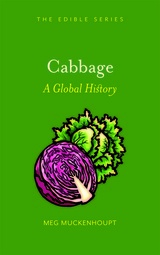
We can’t live without cabbage, but we don’t want to stand downwind of it, and in this lively book, Meg Muckenhoupt traces this culinary paradox. From senators’ speeches in ancient Rome to South Korean astronauts’ luggage, she explores the cultural and chemical basis for cabbage’s smelly reputation and enduring popularity. Filled with fascinating facts and recipes for everything from French cabbage soup to sauerkraut chocolate cake, Cabbage is essential reading for both food lovers and historians around the globe—and anyone craving their daily dose of leafy greens.
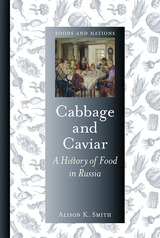

As Torre shows, cacti have played a prominent role in human history for thousands of years. Some species were revered by ancient civilizations, playing a part in their religious ceremonies; other varieties have been cultivated for their medicinal properties and even as a source of dye, as in the case of the prickly pear cactus and the cochineal insect, the source of red carmine used in everything from food to lipstick. Torre examines how cacti have figured in low-footprint gardens, as iconic features of the landscapes of Westerns, and as a delicious culinary ingredient, from nutritious Nopal pads to alluring Pitaya—or Dragon—fruits. Entertaining and informative, this book will appeal to any of us who have admired these hardy, efficient plants.
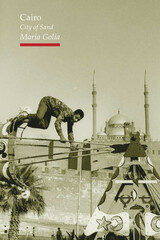
Cairo steps inside the interactions between Cairenes, examining the roles of family, tradition and bureaucracy in everyday life. The book explores Cairo's relationship with its "others", from the French and British occupations to modern influences like tourism and consumerism. Cairo also discusses characteristic styles of communication, and linguistic mêmes, including slang, grandiloquence, curses and jokes.
Cairo exists by virtue of these interactions, synergies of necessity, creativity and the presence or absence of power. Cairo: City of Sand reveals a peerless balancing act, and transmits the city's overriding message: the breadth of the human capacity for loss, astonishment and delight.
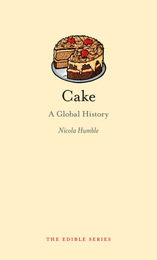
Be it a birthday or a wedding—let them eat cake. Encased in icing, crowned with candles, emblazoned with congratulatory words—cake is the ultimate food of celebration in many cultures around the world. But how did cake come to be the essential food marker of a significant occasion? In Cake: A Global History, Nicola Humble explores the meanings, legends, rituals, and symbolism attached to cake through the ages.
Humble describes the many national differences in cake-making techniques, customs, and regional histories—from the French gâteau Paris-Brest, named for a cycle race and designed to imitate the form of a bicycle wheel, to the American Lady Baltimore cake, likely named for a fictional cake in a 1906 novel by Owen Wister. She also details the role of cake in literature, art, and film—including Miss Havisham’s imperishable wedding cake in Great Expectations and Marcel Proust’s madeleine of memory—as well as the art and architecture of cake making itself.
Featuring a large selection of mouthwatering images, as well as many examples and recipes for some particularly unusual cakes, Cake will provide many sweet reasons for celebration.
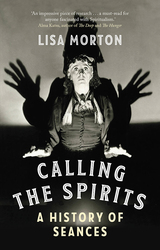
Calling the Spirits investigates the eerie history of our conversations with the dead, from necromancy in Homer’s Odyssey to the emergence of Spiritualism—when Victorians were entranced by mediums and the seance was born. Among our cast are the Fox sisters, teenagers surrounded by “spirit rappings”; Daniel Dunglas Home, the “greatest medium of all time”; Houdini and Sir Arthur Conan Doyle, whose unlikely friendship was forged, then riven, by the afterlife; and Helen Duncan, the medium whose trial in 1944 for witchcraft proved more popular to the public than news about the war. The book also considers Ouija boards, modern psychics, and paranormal investigations, and is illustrated with engravings, fine art (from beyond), and photographs. Hugely entertaining, it begs the question: is anybody there . . . ?
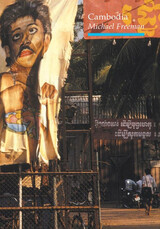
In Cambodia, writer and photographer Michael Freeman examines the country’s present troubled situation in the light of its political and cultural history, looking at many aspects of modern Cambodia, including the psychological effect of the outrages of Pol Pot, and how Angkor Wat has become an icon and symbol for its tourist and heritage industry. In the process he relates personal stories and anecdotes from Cambodia’s recent and more ancient history, such as royal white elephants and buffalo sacrifices in villages; how spiders are cooked and eaten; and the incidence of cannibalism in Cambodian warfare. Cambodia is sometimes shocking, often humorous, and always entertaining, and will give the reader a new insight into the history of this maltreated yet fascinating country.
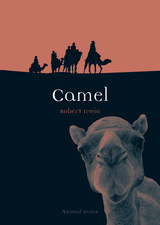
A distinct symbol of the desert and the Middle East, the camel was once unkindly described as “half snake, half folding bedstead.” But in the eyes of many the camel is a creature of great beauty. This is most evident in the Arab world, where the camel has played a central role in the historical development of Arabic society—where an elaborate vocabulary and extensive literature have been devoted to it.
In Camel, Robert Irwin explores why the camel has fascinated so many cultures, including those cultivated in locales where camels are not indigenous. Here, he traces the history of the camel from its origins millions of years ago to the present day, discussing such matters of contemporary concern as the plight of camel herders in Sudan’s war-torn Darfur region, the alarming increase in the population of feral camels in Australia, and the endangered status of the wild Bactrian in Mongolia and China. Throughout history, the camel has been appreciated worldwide for its practicality, resilience, and legendary abilities of survival. As a result it has been featured in the works of Leonardo da Vinci, Poussin, Tiepolo, Flaubert, Kipling, and Rose Macaulay, among others. From East to West, Irwin’s Camel is the first survey of its kind to examine the animal’s role in society and history throughout the world.
Not just for camel aficionados, this highly illustrated book, containing over 100 informative and unusual images, is sure to entertain and inform anyone interested in this fascinating and exotic animal.
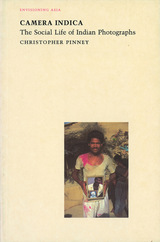
These quiet but moving images represent the changing role of photographic portraiture in India, a topic anthropologist Christopher Pinney explores in Camera Indica. Studying photographic practice in India, Pinney traces photography's various purposes and goals from colonial through postcolonial times. He identifies three key periods in Indian portraiture: the use of photography under British rule as a quantifiable instrument of measurement, the later role of portraiture in moral instruction, and the current visual popular culture and its effects on modes of picturing. Photographic culture thus becomes a mutable realm in which capturing likeness is only part of the project. Lavishly illustrated, Pinney's account of the change from depiction to invention uncovers fascinating links between these evocative images and the society and history from which they emerge.

Food preservation rests in a simple problem: food tends to come in concentrated periods of abundance and then quickly spoil. Today we might pump it full of preservatives or throw it in the freezer, but for most of our time eating the things that the earth provides, we haven’t had these luxuries. As Allen shows, that’s been a wonderful limitation: our ancestors, knowing next to nothing about organic chemistry, found consistent techniques not only to preserve the foods they grew but to alter them—to delicious effects. Wine is more than old grape juice, cheese more than spoiled milk. Allen details how these transformations resulted in new flavors, textures, and, ultimately, new ways of defining the tastes and culture of a community, which passed down its knowledge from generation to generation. Exploring the history and science of preservation, he examines all the major techniques—from drying to smoking to salting to canning to fermentation—reveling in the cornucopia of different foods they have produced. Allaying the fears of the squeamish, he serves up easy-to-do historic and modern recipes that will help any home cook participate in one of culinary history’s most hallowed traditions.

A distinct Canadian design attitude coalesced during the twentieth century, one informed by a liberal, hybrid, and pragmatic mindset intent less upon the dogma of architectural language and more on thinking about the formation of inclusive spaces and places. Taking a fresh perspective on design production, they map the unfolding of architectural modernity across the country, from the completion of the transcontinental railway in the late 1880s through to the present. Along the way they discuss architecture within the broader contexts of political, industrial, and sociocultural evolution; the urban-suburban expansion; and new building technologies. Examining the works of architects and firms such as ARCOP, Eric Arthur, Ernest Cormier, Brigitte Shim, and Howard Sutcliffe, this book brings Canadian architecture chronologically and thematically to life.
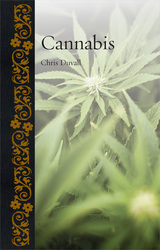
Providing a global historical geography of cannabis, Duvall discusses the manufacture of hemp and its role in rope-making, clothing, and paper, as well as cannabis’s use as oil and fuel. His focus, though, is on its most prevalent use: as a psychoactive drug. Without advocating for either the prohibition or legalization of the drug, Duvall analyzes a wide range of works to offer a better understanding of both stances and, moreover, the diversity of human-cannabis relationships across the world. In doing so, he corrects the overly simplistic portrayals of cannabis that have dominated discourse on the subject, arguing that we need to understand the big picture in order to improve how the plant is managed worldwide. Richly illustrated and highly accessible, Cannabis is an essential read to understand the rapidly evolving debate over the legalization of marijuana in the United States and other countries.

Votolato explores the ways that our love-hate relationship with the car has been intimately connected with car design. He tells the story of the rise of the private passenger car and all the psychological, social, and economic functions it has come to serve beyond mere transportation. Introducing readers to the automotive design process, he traces the lifecycle of the car from the drawing board to the scrapyard, offering insights from key figures in the industry, as well as a careful evaluation of the car’s enormous environmental impact. At the same time, he looks at the many cultures tied into the automobile, from drag racing and customizing to the luxury coachcraft of the classic era. Along the way, he takes us for a ride in some of the most famous cars ever to have had their tires inflated, from the Model T to the Tesla. The result is a top-down, thrilling burn through the history of one of our most beloved—and lamented—inventions.
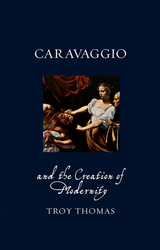
Undeniably one of the greatest artists of all time, Michelangelo Merisi da Caravaggio would develop a radically new kind of psychologically expressive, realistic art and, in the sixteenth and seventeenth centuries, would lay the foundations for modern painting. His paintings defied tradition to such a degree that the meaning of his works has divided critics and viewers for centuries. In this original study, Troy Thomas examines Caravaggio’s life and art in relationship to the profound beginnings of modernity, exploring the many conventions that Caravaggio utterly dismantled with his extraordinary genius.
Thomas begins with an in-depth look at Caravaggio’s early life and works and examines how he refined his realism, developed his obsession with darkness and light, and began to find the subtle and clever ambiguity of genre and meaning that would become his trademark. Focusing acutely on the inherent tensions, contradictions, and ambiguities within Caravaggio’s paintings, Thomas goes on to examine his mature religious works and the ways he created a powerful but stark and enigmatic expressiveness in his protagonists. Lastly, he delves into the artist’s final hectic years as a fugitive killer evading papal police and wandering the cities of southern Italy.
Richly illustrated in color throughout, Caravaggio and the Creation of Modernity will appeal to all of those fascinated by the history of art and the remarkable lives of Renaissance masters.
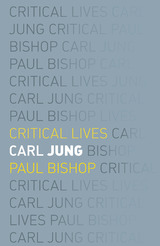
Paul Bishop follows Jung from his early childhood to his years at the University of Basel and his close relationship—and eventual break—with Sigmund Freud. Exploring Jung’s ideas, Bishop takes up the psychiatrist’s suggestion that “the tragedies of Goethe’s Faust and Nietzsche’s Thus Spoke Zarathustra . . . mark the first glimmerings of a breakthrough of total experience in our Western hemisphere,” engaging with Jung’s scholarship to offer one of the fullest appreciations yet of his distinctive approach to culture. Bishop also considers the role that the Red Book, written between 1914 and 1930 but not published until 2009, played in the progression of Jung’s thought, allowing Bishop to provide a new assessment of this divisive personality. Jung’s attempt to synthesize the different parts of human life, Bishop argues, marks the man as one of the most important theorists of the twentieth century.
Providing a compelling examination of the life of this highly influential figure, the concise and accessible Carl Jung will find a place on the shelves of students, scholars, and both clinical and amateur psychologists alike.
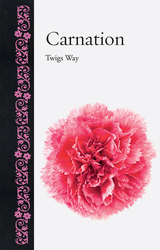
The author traces the trials and tribulations of early breeders—compelled by florists’ fascinations for the striped and spotted—which led to delightfully colored (and delightfully named) varieties such as Lustie Gallant and Bleeding Swain. She looks at the symbolism of the red and white—and even green—carnations made famous by Oscar Wilde, and glides through many of the rooms in literature and history that we have filled with the carnation’s glorious scent. Travelling from Europe to China, Way explores how carnations have been used by herbalists the world over as a treatment for ailments to both mind and body, and she looks at the many paintings that have attempted to capture their unique complexities. Lavishly illustrated and full of unexpected delights, this book will—like the carnation itself—charm the mind and invigorate the senses.

Carnivorous plants are a unique botanical group, possessing modified leaves to trap, kill, and consume small creatures. As a result, they are often depicted as killers in films and literature—from Audrey in Little Shop of Horrors to the world-dominating plants of The Day of the Triffids—yet many people regard carnivorous plants as exotic and beautiful specimens to collect and display.
In this abundantly illustrated and highly entertaining book, Dan Torre describes the evolution, structure, and scientific background of carnivorous plants. Examining their cultural and social history, he also shows how they have inspired our imagination and been represented in art, literature, cinema, animation, and popular culture.
From the Venus flytrap—a species endemic to the Carolinas—to pitcher plants, this fascinating history of these singular, arresting, beautiful, yet deadly plants is certain to be devoured.
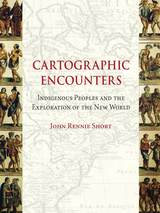
There’s no excuse for getting lost these days—satellite maps on our computers can chart our journey in detail and electronics on our car dashboards instruct us which way to turn. But there was a time when the varied landscape of North America was largely undocumented, and expeditions like that of Lewis and Clark set out to map its expanse. As John Rennie Short argues in Cartographic Encounters, that mapping of the New World was only possible due to a unique relationship between the indigenous inhabitants and the explorers.
In this vital reinterpretation of American history, Short describes how previous accounts of the mapping of the new world have largely ignored the fundamental role played by local, indigenous guides. The exchange of information that resulted from this “cartographic encounter” allowed the native Americans to draw upon their wide knowledge of the land in the hope of gaining a better position among the settlers.
This account offers a radical new understanding of Western expansion and the mapping of the land and will be essential to scholars in cartography and American history.
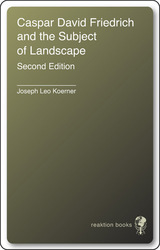
Caspar David Friedrich (1774–1840) is heralded as the greatest painter of the Romantic movement in Germany, and Europe’s first truly modern artist. His mysterious and melancholy landscapes, often peopled with lonely wanderers, are experiments in a radically subjective artistic perspective—one in which, as Freidrich wrote, the painter depicts not “what he sees before him, but what he sees within him.” This vulnerability of the individual when confronted with nature became one of the key tenets of the Romantic aesthetic.
Now available in a compact, accessible format, this beautifully illustrated book is the most comprehensive account ever published in English of one of the most fascinating and influential nineteenth-century painters.
“This is a model of interpretative art history, taking in a good deal of German Romantic philosophy, but founded always on the immediate experience of the picture. . . . It is rare to find a scholar so obviously in sympathy with his subject.”—Independent

Four thousand years later, the cat continues to charm us. Katharine M. Rogers traces our relationship with this curious creature in Cat, an entertaining look at one of the most popular pets in the world. From the domestic cat’s emergence in ancient Egypt to its enormous popularity in the contemporary United States, Rogers uncovers the feline’s cultural history in all its numerous forms: rat-catcher, witch’s familiar, and even the inscrutable creature that inspired Lewis Carroll and Edgar Allan Poe. As Rogers demonstrates, our fascination with cats lies in their uncanny ability to embody just about any character—from sweet to ferocious, affectionate to independent, eerie to elegant.
Cat will be relished by anyone who appreciates these lovable companions and their amazing ability to bring joy to our lives.
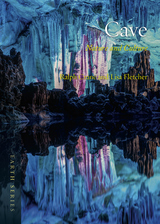
To enter caves is to venture beyond the realm of the everyday. From huge vaulted caverns to impassable, water-filled passages; from the karst topography of Guilin in China to the lava tubes of Hawaii; from tiny remote pilgrimage sites to massive tourism enterprises, caves are places of mystery. Dark spaces that remain largely unexplored, caves are astonishing wonders of nature and habitats for exotic flora and fauna.
This book investigates the natural and cultural history of caves and considers the roles caves have played in the human imagination and experience of the natural world. It explores the long history of the human fascination with caves, across countries and continents, examining their dual role as spaces of both wonder and fear. It tells the tales of the adventurers who pioneered the science of caves and those of the explorers and cave-divers still searching for new, unmapped routes deep into the earth. This book explores the lure of the subterranean world by examining caving and cave tourism and by looking to the mythology, literature, and art of caves. This lavishly illustrated book will appeal to general readers and experts alike interested in the ecology and use of caves, or the extraordinary artistic responses earth’s dark recesses have evoked over the centuries.
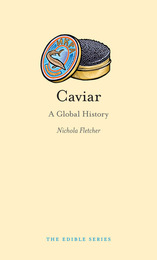
Served up with a mother of pearl spoon and alongside a crystal flute of champagne, caviar is the ultimate culinary symbol of wealth, luxury, and decadence. But how did tiny fish eggs—which many might regard as an unwanted, throwaway food—become such an international delicacy? In Caviar: A Global History, renowned food writer Nichola Fletcher answers this curious question, examining the rise of caviar as an indulgence and its effect on the lives of the people who seek and sell it today.
Fletcher takes the reader on a tour of the main areas of caviar production—Russia, Iran, Europe, and America—and investigates how the industry has contributed to the decline of the sturgeon population, the fish most associated with caviar. As Fletcher details, many efforts are underway to create sustainable sturgeon farming, which would make it possible to enjoy caviar with a clear, environmental conscience.
Featuring vibrant illustrations and many fascinating anecdotes, Caviar also offers advice on purchasing and serving caviar. This is the perfect food book for everyone in need of a little opulence and glamour.

Chris Rojek brings together celebrated figures from the arts, sports, politics and other public spheres, from O.J. Simpson and Marilyn Monroe to Hitler and David Bowie, and touches on many movements and fads, including punk, rock-and-roll and fashion. Rojek analyzes the difference between ascribed celebrity, which derives from bloodline, and achieved celebrity, which follows on from personal achievement - the difference between Princess Margaret and, say, Woody Allen. He also shows how there is no parallel in history to today's ubiquitous "living" form of celebrity, powered by newspapers, PR departments, magazines and electronic mass media.

The chair—you’re likely sitting in one right now. Yet, despite its common presence in offices, restaurants, and homes, we very rarely stop to think about the origins of the chair and its place in culture. After all, the human body is actually more suited to sitting on the ground than on a chair; and as a result, chairs often cause back problems. Nonetheless, in Western culture, as Anne Massey explains, the chair is an object that marks our place in the modern world.
Massey explores how, particularly in the last hundred years, the chair has become a revered object of design. Certain chairs have become iconic—like the Eames Lounge chair and Verner Panton’s S Chair, which are photographed, exhibited in art museums, and slavishly copied by cheaper models. Other chairs have reached iconic status simply through their everydayness—think of Van Gogh’s chair or the way Shaker chairs have become emblematic of a simpler and purer lifestyle. Massey further examines how chairs have been crafted, from local to global manufacture. In doing so she elucidates the meaning of the chair in contemporary culture, as well as the development, design, and manufacture of this ubiquitous object.
Drawing on design, art, popular culture, and personal experience, Chair is an engaging and informative biography of this everyday object and will appeal to anyone interested in why we choose to sit on the chairs we do.
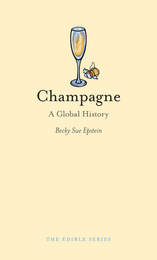

Lloyd argues that Baudelaire’s writings and life were intimately intertwined—and both were powerfully informed by contemporaneous political events, from his participation in the 1848 Revolution to the public morality codes that banned his controversial writings, such as Les fleurs du mal. The book traces the influence of these events and other political moments in his poems and essays and analyzes his works in this new light. Lloyd also examines the links between Baudelaire’s works and cultural movements of the time, from the rise and fall of Romanticism to symbolism, and explores his groundbreaking translations of Edgar Allan Poe’s writings into French.
Baudelaire’s tumultuous personal life figures large here, too, as Lloyd draws out fascinating aspects of his personality and daily life through analysis of archival writings of his friends and acquaintances. The book also documents his battles with syphilis and drug addiction, which ultimately resulted in his death. An engrossing and wholly readable biography, Charles Baudelaire will be essential for scholars and Baudelaire admirers alike.
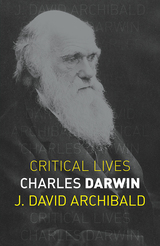
In 1859 Charles Darwin published On the Origin of Species. With this bedrock of biology books, Darwin carved a new origin-story for all life: evolution rather than creation. But this single book is not the whole story. In this new biography, J. David Archibald describes and analyzes Darwin’s prodigious body of work and complex relationships with colleagues, as well as his equally productive home life—he lived with his wife and seven surviving children in the bustling environs of Down House, south of London. There, among his family and friends, Darwin continued to experiment and write many more books on orchids, sex, emotions, and earthworms until his death in 1882, when he was honored with burial at Westminster Abbey. This is a fresh, up-to-date account of the life and work of a most remarkable man.

Take a slice of bread. It’s perfectly okay in and of itself. Maybe it has a nice, crisp crust or the scent of sourdough. But really, it’s kind of boring. Now melt some cheese on it—a sharp Vermont cheddar or a flavorful Swiss Gruyere. Mmm, delicious. Cheese—it’s the staple food, the accessory that makes everything better, from the hamburger to the ordinary sandwich to a bowl of macaroni. Despite its many uses and variations, there has never before been a global history of cheese, but here at last is a succinct, authoritative account, revealing how cheese was invented and where, when, and even why.
In bite-sized chapters well-known food historian Andrew Dalby tells the true and
savory story of cheese, from its prehistoric invention to the moment of its modern rebirth. Here you will find the most ancient cheese appellations, the first written description of the cheese-making process, a list of the luxury cheeses of classical Rome, the medieval rule-of-thumb for identifying good cheese, and even the story of how loyal cheese lover Samuel Pepys saved his parmesan from the great Fire of London. Dalby reveals that cheese is one of the most ancient of civilized foods, and he suggests that our passion for cheese may even lay behind the early establishment of global trade.
Packed with entertaining cheese facts, anecdotes, and images, Cheese also
features a selection of historic recipes. For those who crave a pungent stilton, a creamy brie, or a salty pecorino, Cheese is the perfect snack of a book.

This book takes us on a sweeping journey through the ebbs and flows of Pakistan’s history, from the ancient Indus Valley Civilization to contemporary times. Chequered Past, Uncertain Future uncovers influences from Turkey, Persia, Arabia, and Britain that have shaped Pakistan, as well as showcases the region’s diverse and rich tapestry of peoples, and its pluralistic, multicultural society. The book also describes the post-1947 shift—following the partition of India and the establishment of the Islamic Republic of Pakistan—as the country became more religiously conservative and autocratic, intensifying sectarian and ethnic divisions. For most of their history, the people of Pakistan have found themselves under the control of military dictators who suppress civil liberties and freedom of speech and action—a trend that persists today.
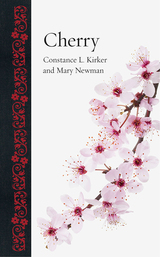

Chicago began as a trading post, which grew into a market for goods from the west, sprouting the still-largest rail hub in America. As people began to trade virtual representations of those goods—futures—the city became a hub of finance and law. And as academics studied the city’s growth and its economy, it became a hub of intellect, where the University of Chicago’s pioneering sociologists shaped how cities at home and abroad understood themselves. Looking inward, Moser explores how Chicago thinks of itself, too, tracing the development of and current changes in its neighborhoods. From Boystown to Chinatown, Edgewater to Englewood, the Ukrainian Village to Little Village, Chicago is famous for them—and infamous for the segregation between them.
With insight sure to enlighten both residents and anyone lucky enough to visit the City of Big Shoulders, Moser offers an informed local’s perspective on everything from Chicago’s enduring paradoxes to tips on its most interesting sights and best eats. An affectionate, beautifully illustrated urban portrait, his book takes us from the very beginnings of Chicago as an idea—a vision in the minds of the region’s first explorers—to the global city it has become.
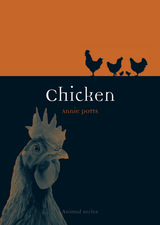
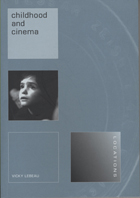

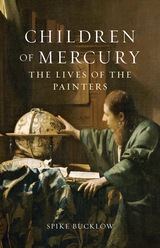
Children of Mercury is a bold new account of the lives of premodern painters, viewed through the lens of “the seven ages of man,” a widespread belief made famous in the “All the world’s a stage” speech in Shakespeare’s As You Like It. Spike Bucklow follows artists’ lives from infancy through childhood, adolescence, and adulthood, to maturity, old age, and death. He tracks how lives unfolded for both male and female painters, from the famous, like Michelangelo, through Artemisia Gentileschi and Mary Beale, to those who are now forgotten, like Jehan Gillemer. The book draws on historic biographies, the artists’ writings, and, uniquely, the physical evidence offered by their paintings.
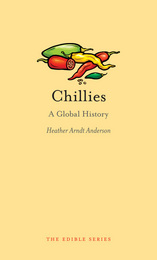
Anderson tells the story of the spicy berry’s rise to prominence, showing that it was cultivated and venerated by the ancient people of Mesoamerica for millennia before Spanish explorers brought it back to Europe. She traces the chilli’s spread along trading routes to every corner of the globe, and she explores the many important spiritual and cultural links that we have formed with it, from its use as an aphrodisiac to, in more modern times, an especially masochistic kind of eating competition. Ultimately, she uses the chili to tell a larger story of global trade, showing how the spread of spicy cuisine can tell us much about the global exchange—and sometimes domination—of culture. Mixing history, botany, and cooking, this entertaining read will give your bookshelf just the kick it needs.
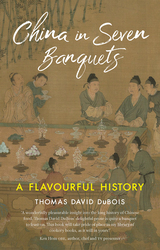
China in Seven Banquets takes readers on a gastronomic adventure into the history of China’s constantly evolving and astonishingly diverse cuisine. From the opulent Eight Treasures feast of ancient times to the Tang dynasty’s legendary “Tail-Burning” banquet, and the extravagant “complete Manchu-Han feast” of the Qing court, these iconic repasts offer glimpses into China’s rich food history. Delving further, the book invites us to partake of lavish banquets immortalized in literature and film, a New Year’s buffet from 1920s Shanghai, a modern delivery menu reflecting the hyperglobal present, and it even offers a peek at the tables of the not-so-distant future. Drawing upon his extensive gastronomic adventures across China, acclaimed historian Thomas David DuBois unravels its ever-changing landscape of culinary trends, revealing why flavors and customs evolved over time. DuBois also recreates dozens of traditional recipes using modern kitchen techniques. Whether indulging in fermented elk or savoring absinthe cocktails, readers embark on an unparalleled odyssey that redefines their perception of Chinese cuisine.
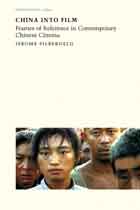
Abundantly illustrated with Chinese paintings as well as scenes from such internationally acclaimed films as Yellow Earth, Red Sorghum, Raise the Red Lantern and Farewell My Concubine, China into Film reveals a cinematic form at once excitingly new and deeply imbedded in traditional Chinese visual culture.
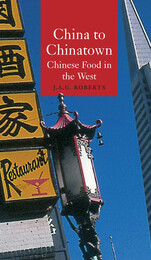
The Western encounter with a wider variety of Chinese cuisine dates from the first half of the 20th century, when Chinese food spread to the West with emigrant communities. The author shows how Chinese cooking has come to be regarded by some as among the world’s most sophisticated cuisines, and yet is harshly criticized by others, for example on the grounds that its preparation involves cruelty to animals.
Roberts discusses the extent to which Chinese food, as a facet of Chinese culture overseas, has remained differentiated, and questions whether its ethnic identity is dissolving.
Written in a lively style, the book will appeal to food historians and specialists in Chinese culture, as well as to readers interested in Chinese cuisine.

Chocolate layer cake. Fudge brownies. Chocolate chip cookies. Boxes of chocolate truffles. Cups of cocoa. Hot fudge sundaes. Chocolate is synonymous with our cultural sweet tooth, our restaurant dessert menus, and our idea of indulgence. Chocolate is adored around the world and has been since the Spanish first encountered cocoa beans in South America in the sixteenth century. It is seen as magical, addictive, and powerful beyond anything that can be explained by its ingredients, and in Chocolate Sarah Moss and Alec Badenoch explore the origins and growth of this almost universal obsession.
Moss and Badenoch recount the history of chocolate, which from ancient times has been associated with sexuality, sin, blood, and sacrifice. The first Spanish accounts claim that the Aztecs and Mayans used chocolate as a substitute for blood in sacrificial rituals and as a currency to replace gold. In the eighteenth century chocolate became regarded as an aphrodisiac—the first step on the road to today’s boxes of Valentine delights. Chocolate also looks at today’s mass-production of chocolate, with brands such as Hershey’s, Lindt, and Cadbury dominating our supermarket shelves.
Packed with tempting images and decadent descriptions of chocolate throughout
the ages, Chocolate will be as irresistible as the tasty treats it describes.
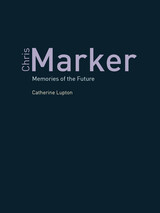
Chris Marker is the first systematic examination of Marker's complete oeuvre. Here, Catherine Lupton traces the development and transformation of the artist's work from the late 1940s, when he began to work as a poet, novelist, and critic for the French journal Esprit, through the 1990s and the release of his most recent works, including Level Five and the CD-ROM Immemory. Lupton explicates Marker's work as a circular trajectory, with each project recycling and referring back to earlier works as well as to a host of adopted texts, always proceeding by oblique association and lateral digression. This trajectory, which Lupton outlines with great care and precision, is critical to understanding Marker's abiding obsession: the forms and operations of human memory. With this theme as her architecture, Lupton presents the most comprehensive and incisive analysis of Marker to date.
Incorporating historical events and cultural contexts that have informed each phase of Marker's career, Lupton gives readers access to an artist who stands outside of the mainstream and thus defies easy explanation. There is no better guide than Lupton's to this modern master's prolific and multidimensional career.

The daughter of a court intellectual, Christine de Pizan dwelled within the cultural heart of late-medieval Paris. In the face of personal tragedy, she learned the tools of the book trade, writing more than forty works that included poetry, historical and political treatises, and defenses of women. In this new biography—the first written for a general audience—Charlotte Cooper-Davis discusses the life and work of this pioneering female thinker and writer. She shows how Christine de Pizan’s inspiration came from the world around her, situates her as an entrepreneur within the context of her times and place, and finally examines her influence on the most avant-garde of feminist artists, through whom she is slowly making a return into mainstream popular culture.
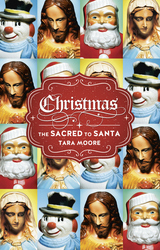
Delving into the long story of this unifying but also divisive holiday, Tara Moore describes the evolution of Christmas and the deep traditions that bind a culture to its version of it. She probes the debates that have long accompanied the season—from questions of the actual date of Christ’s birth to frictions between the sacred and the secular—and discusses the characters associated with the holiday’s celebration, including Saint Nicholas, the Magi, Scrooge, and Krampus. She also explores how customs such as Christmas trees, feasting, and gift giving first emerged and became central facets of the holiday, while also examining how Christmas has been portrayed in culture—from the literary works of Charles Dickens to the yearly bout of holiday films, television specials, traditional carols, and modern tracks. Ultimately, Moore reveals, Christmas’s longevity has depended on its ability to evolve. Packed with illustrations, Christmas is a fascinating look at the holiday we only think we know.

Chromophobia has been a cultural phenomenon since ancient Greek times; this book is concerned with forms of resistance to it. Writers have tended to look no further than the end of the nineteenth century. David Batchelor seeks to go beyond the limits of earlier studies, analyzing the motivations behind chromophobia and considering the work of writers and artists who have been prepared to look at color as a positive value. Exploring a wide range of imagery including Melville's "great white whale", Huxley's reflections on mescaline, and Le Corbusier's "journey to the East", Batchelor also discusses the use of color in Pop, Minimal, and more recent art.
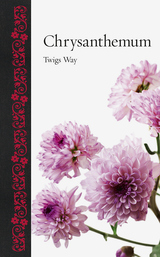
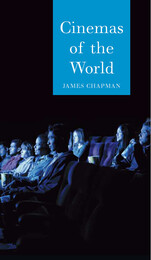
Chapman examines the rise to dominance of Hollywood cinema in the silent and early sound periods. He discusses the characteristic themes of American movies from the Depression to the end of the Cold War especially those found in the western and film noir – genres that are often used as vehicles for exploring issues central to us society and politics. He looks at national cinemas in various European countries in the period between the end of the First World War and the end of the Second, which all exhibit the formal and aesthetic properties of modernism. The emergence of the so-called "new cinemas" of Europe and the wider world since 1960 are also explored.
"Chapman is a tough-thinking, original writer . . . an engaging, excellent piece of work."—David Lancaster, Film and History
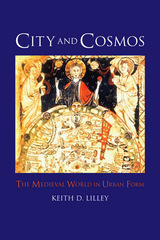
In City and Cosmos, Keith D. Lilley argues that the medieval mind considered the city truly a microcosm: much more than a collection of houses, a city also represented a scaled-down version of the very order and organization of the cosmos. Drawing upon a wide variety of sources, including original accounts, visual art, science, literature, and architectural history, City and Cosmos offers an innovative interpretation of how medieval Christians infused their urban surroundings with meaning.
Lilley combines both visual and textual evidence to demonstrate how the city carried Christian cosmological meaning and symbolism, sharing common spatial forms and functional ordering. City and Cosmos will not only appeal to a diverse range of scholars studying medieval history, archaeology, philosophy, and theology; but it will also find a broad audience in architecture, urban planning, and art history. With more of the world’s population inhabiting cities than ever before, this original perspective on urban order and culture will prove increasingly valuable to anyone wishing to better understand the role of the city in society.

French composer Claude Debussy (1862–1918) created music that was revolutionary, with a distinctly modern sound that highlighted the intersection of art and life. Here, in this unique biography, David J. Code explores the important moments in the development of Debussy’s literary interests that shaped his music—and in the process brings to life Debussy’s sardonic personality.
Claude Debussy presents an in-depth look at how Debussy’s love for poetry influenced his musical compositions. Code explores both Debussy’s earlier years, filled with student cantatas inspired by Verlaine and Baudelaire, as well as his later works, dominated by nationalistic pieces inspired by French Renaissance poets and composed in the lead-up to World War I. Along the way, Code looks at Debussy’s orchestral compositions and operas, inspired by Stéphane Mallarmé and Maurice Maeterlinck.
This book will give readers a fresh way of listening to Debussy’s classic music by offering the most up-to-date critical analysis of the intersection of Debussy’s literary interests and musical compositions and will appeal to any reader with a love of Debussy, as well as modern music, literature, and the arts.
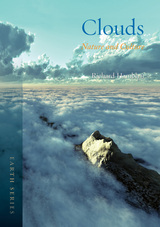
As Hamblyn shows, clouds function not only as a crucial means of circulating water around the globe but also as a finely tuned thermostat regulating the planet’s temperature. He discusses the many different kinds of clouds, from high, scattered cirrus clouds to the plump thought-bubbles of cumulus clouds, even exploring man-made clouds and clouds on other planets. He also shows how clouds have featured as meaningful symbols in human culture, whether as ominous portents of coming calamities or as ethereal figures giving shape to the heavens, whether in Wordsworth’s poetry or today’s tech speak. Comprehensive yet compact, cogent and beautifully illustrated, this is the ultimate guidebook to those shapeshifters of the sky.
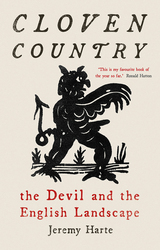
According to legend, the English landscape—so calm on the surface—is really the Devil’s work. Cloven Country tells of rocks hurled into place and valleys carved out by infernal labor. The Devil’s hideous strength laid down great roads in one night and left scars everywhere as the hard stone melted like wax under those burning feet. With roots in medieval folklore of giants and spirits, this is not the Satan of prayer, but a clumsy ogre, easily fooled by humankind. When a smart cobbler or cunning young wife outwitted him, they struck a blow for the underdog. Only the wicked squire and grasping merchant were beyond redemption, carried off by a black huntsman in the storm. Cloven Country offers a fascinating panorama of these decidedly sinister English tales.
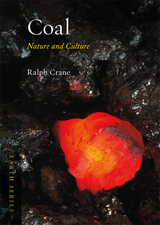

Attempts to chronicle the cockroach’s intellectual and emotional life have been made only within the last century when a scientist titled his essay on the cockroach "The Intellectual and Emotional World of the Cockroach", and artists as radically different as Franz Kafka and Don Marquis created equally memorable cockroach protagonists.
At least since Classical Greece, authors have brought cockroach characters into the foreground to speak for the weak and downtrodden, the outsiders, those forced to survive on the underside of dominant human cultures. Cockroaches have become the subjects of songs (La Cucaracha), have competed in "roachraces" and have even ended up in recipes. In this accessible, sympathetic and often humorous book, Marion Copeland examines the natural history, symbolism and cultural significance of this poorly understood and much-maligned insect.
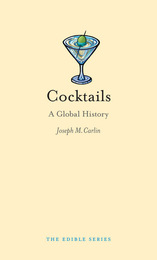
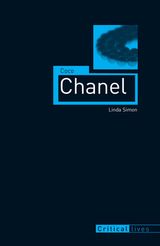
The name Chanel brings immediately to mind the signature scent of No. 5 and the understated but sophisticated glamour of a simple black dress and pearls. But to consider Gabrielle “Coco” Chanel (1883–1971) as simply a fashion designer fails to capture her social and cultural significance. As Linda Simon reveals in this biography, Chanel was an iconoclastic entrepreneur who rebelled against and manipulated gender expectations of her time. With her menswear-inspired designs, her loose jersey sweaters belted jauntily at the waist, and her svelte, unadorned gowns, Chanel changed women’s silhouettes, and she became known as a champion of women’s freedom. Chanel not only changed the shape of women’s clothing, but the narrative of women’s lives in the early twentieth century. From her very first hat shop until her death, Chanel sold more than fashion—she sold a myth that became as attractive for many women as her coveted outfits.
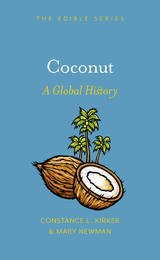
The flavor and image of the coconut are universally recognizable, conjuring up sweet, exotic pleasures. Called the “Swiss army knife” of the plant world, the versatile coconut can be an essential ingredient in savory curries, or a sacred element in Hindu rituals or Polynesian kava ceremonies. Coconut’s culinary credentials extend far beyond a sprinkling on a fabulous layer cake or cream pie to include products such as coconut vinegar, coconut sugar, coconut flour, and coconut oil. Complete with recipes, this book explores the global history of coconut from its ancient origins to its recent elevation to super-food status.
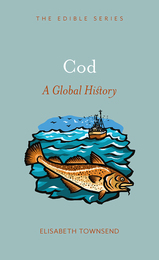
This is the first culinary history of a truly remarkable fish. Elisabeth Townsend follows cod around the globe, showing how its pursuit began with the Vikings, and exploring its influence on human affairs ever since. The book looks at the different ways cod has been caught, cooked, and eaten, often by the descendants of explorers, enslaved people, and traders. Cod examines the fish in the myths and legends of the North Atlantic, the West Indies, South America, West and Southeast Africa, and across the Indian Ocean to the Far East. It is a fascinating journey through cod fact and lore and features delectable historical and contemporary recipes that showcase the myriad ways cod can be consumed.

Sifting through the grounds of coffee history, Morris discusses the diverse cast of caffeinated characters who drank coffee, why and where they did so, as well as how it was prepared and what it tasted like. He identifies the regions and ways in which coffee has been grown, who worked the farms and who owned them, and how the beans were processed, traded, and transported. Morris also explores the businesses behind coffee—the brokers, roasters, and machine manufacturers—and dissects the geopolitics linking producers to consumers. Written in a style as invigorating as that first cup of Java, and featuring fantastic recipes, images, stories, and surprising facts, Coffee will fascinate foodies, food historians, baristas, and the many people who regard this ancient brew as a staple of modern life.
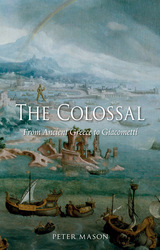
Combining fascinating detail with a rigorous account that spans three millennia, The Colossal argues that the artist who best understood and tapped into the kolossos was Alberto Giacometti. Mason shows that the Swiss sculptor and painter’s work articulated themes of death and mourning in ways rarely seen since the art of archaic Greece, themes most evident in his enigmatic work, The Cube. From the monolithic sculptures of long-dead civilizations to Giacometti’s imposing and unsettling heads, The Colossal is an innovative book that traces unexplored thematic threads through visual history.
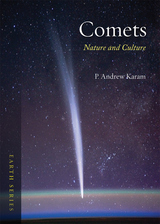
In Comets, P. Andrew Karam takes the reader on a far-ranging exploration of these most beautiful and dramatic objects in the skies, revealing how comets and humanity have been interwoven throughout history. He delves into the science of comets and how it has changed over time; the way comets have been depicted in art, religion, literature, and popular culture; and how comets have appeared in the heavens through the centuries. Comprehensive in scope and beautifully illustrated throughout, the book will appeal not only to the budding astronomer, but to anyone with an appreciation for these compelling and remarkable celestial bodies.
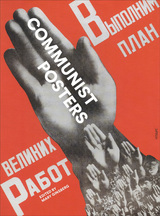
Enriched with essays by several experts in a variety of regions, this collection showcases an extraordinary variety of communist art coming from the Soviet Union, China, Mongolia, North Korea, Vietnam, Cuba, and several countries in Eastern Europe. Together they show how effectively posters were used as tools of mobilization, instruction, censure, debate, and manipulation of public thought and opinion. As this collection shows, posters were used not only to promote the authority of the state and its revolutionary ideals, they were also used as a means of revolutionary protest and ways of warning against the dangers of other political regimes, such as Nazism. By their nature, these posters are ephemeral, tied to time, place, and specific events, but many have had far-reaching and long-lasting impact, in no small part due to the astonishing craft and beauty they display. In fact, many of these posters have eventually found their way into museums, due to the strength of their designs.
Beautifully arrayed, the posters in this collection offer a comprehensive look at the broad range of visual works that have both expressed and fueled one of the most powerful political ideas of the modern era.
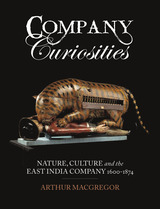
For a time, the East India Company’s own India Museum in London led the way in presenting their findings and establishing for a larger public the characteristic features of a subcontinent that would become the heart of Britain’s worldwide empire. Later, when the Great Exhibition and its successors redefined the style and the scale of presentation of the world’s commercial and industrial processes, the Company’s talented curators (now under their new masters, the India Office) continued to play a key role in articulating these materials. Meanwhile, Company employees returning from years of service diffused a taste for all things Indian. Superbly illustrated, Company Curiosities reveals how these diverse players invented the look and feel of India for those who had never ventured abroad.

The pixelated rectangle we spend most of our day staring at in silence is not the television as many long feared, but the computer—the ubiquitous portal of work and personal lives. At this point, the computer is almost so common we don’t notice it in our view. It’s difficult to envision that not that long ago it was a gigantic, room-sized structure only to be accessed by a few inspiring as much awe and respect as fear and mystery. Now that the machine has decreased in size and increased in popular use, the computer has become a prosaic appliance, little-more noted than a toaster. These dramatic changes, from the daunting to the ordinary, are captured in Computer by design historian Paul Atkinson.
Here, Atkinson chronicles the changes in physical design of the computer and shows how these changes in design are related to changes in popular attitude. Atkinson is fascinated by how the computer has been represented and promoted in advertising. For example, in contrast to ads from the 1970s and ’80s, today’s PC is very PC—genderless, and largely status free. Computer also considers the role of the computer as a cultural touchstone, as evidenced by its regular appearance in popular culture, including the iconography of the space age, HAL from 2001: A Space Odyssey, James Bond’s gadgetry, and Stars War and Star Trek.
Computer covers many issues ignored by other histories of computing, which have focused on technology and the economics involved in their production, but rarely on the role of fashion in the physical design and promotion of computers and their general reception. The book will appeal to professionals and students of design and technology as well as those interested in the history of computers and how they have shaped—and been shaped by—our lives.
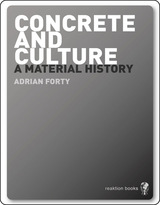
Concrete has been used in arches, vaults, and domes dating as far back as the Roman Empire. Today, it is everywhere—in our roads, bridges, sidewalks, walls, and architecture. For each person on the planet, nearly three tons of concrete are produced every year. Used almost universally in modern construction, concrete has become a polarizing material that provokes intense loathing in some and fervent passion in others.
Focusing on concrete’s effects on culture rather than its technical properties, Concrete and Culture examines the ways concrete has changed our understanding of nature, of time, and even of material. Adrian Forty concentrates not only on architects’ responses to concrete, but also takes into account the role concrete has played in politics, literature, cinema, labor-relations, and arguments about sustainability. Covering Europe, North and South America, and the Far East, Forty examines the degree that concrete has been responsible for modernist uniformity and the debates engendered by it. The first book to reflect on the global consequences of concrete, Concrete and Culture offers a new way to look at our environment over the past century.
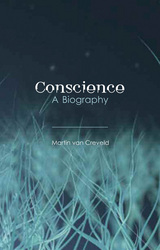
In this biography of that most elusive human element, Martin van Creveld explores conscience throughout history, ranging across numerous subjects, from human rights to health to the environment. Along the way he considers the evolution of conscience in its myriad, occasionally strange, and ever-surprising permutations. He examines the Old Testament, which—erroneously, it turns out—is normally seen as the fountainhead from which the Western idea of conscience has sprung. Next, he takes us to meet Antigone, the first person on record to explicitly speak of conscience. We then visit with the philosophers Zeno, Cicero and Seneca; with Christian thinkers such as Paul, Augustine, Aquinas, and, above all, Martin Luther; as well as modern intellectual giants such as Machiavelli, Rousseau, Kant, Hegel, Nietzsche, and Freud. Individual chapters are devoted to Japan, China, and even the Nazis, as well as the most recent discoveries in robotics and neuroscience and how they have contributed to the ways we think about our own morality. Ultimately, van Creveld shows that conscience remains as elusive as ever, a continuously mysterious voice that guides how we think about right and wrong.
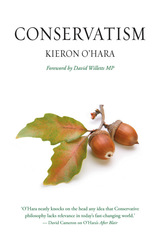
The term "conservative," when employed today in reference to politicians and beliefs, can denote groups as diverse and incompatible as the religious right, libertarians, and opponents of large, centralized government. Yet the original conservative philosophy, first developed in the eighteenth century by Edmund Burke, was most concerned with managing change. This kind of genuine conservatism has a renewed relevance in a complex world where change is rapid, pervasive, and dislocating.
In Conservatism, Kieron O’Hara presents a thought-provoking revision of the traditional conservative philosophy, here crafted for the modern age. As O’Hara argues, conservatism transcends traditional politics and has surprising applications—not least as the most appropriate and practical response to climate change. He shows what a properly conservative ideology looks like today, and draws on such great conservative thinkers as Burke and Adam Smith, philosophers from Plato to Wittgenstein, and contemporary social commentators such as Nassim Nicholas Taleb, Ulrich Beck, and Jared Diamond, in order to outline how conservative philosophy lays bare our failure to understand our own society. O’Hara proves as well that conservatism is distinct from neo-liberalism, neo-conservatism, and the extreme positions of many of today’s most outspoken commentators.
In this comprehensive and detailed description of a philosophy of change and innovation, O’Hara shows how conservatism can be an ideology sensitive to cultural differences among the United States, Europe, the Middle East, and elsewhere. As well, he highlights key issues of technology, trust, and privacy. Conservatism is a provocative read and a level-headed guide to cutting through the many voices of policy makers and pundits claiming to represent conservative points of view.

Acknowledged as one of the major sculptors and avant-garde artists of the twentieth century, Constantin Brancusi (1876–1957) was also one of the most elusive, despite his fame. His mysterious nature was not only due to his upbringing in Romania—which, at the time, was still regarded by much of Europe as a backward country haunted by vampires and werewolves—but also because Brancusi was aware that myth and an aura of otherness appealed to the public. His self-mythology remained intact until the publication of Brancusi in 1986 by Romanian artists Alexandre Istrati and Natalia Dumitresco, who made available a small selection of the archive of Brancusi’s correspondence. And in 2003, a comprehensive catalogue, which made the bulk of Brancusi’s private correspondence public for the first time, was published by the Centre Pompidou to accompany a retrospective on Brancusi’s work.
In Constantin Brancusi, Sanda Miller employs these extensive new resources to better assess Brancusi’s life and work in relationship to each other, providing valuable and innovative insights into his relationships with friends, collectors, dealers and lovers. Miller’s perceptive book allows Brancusi to finally take his rightful place among the most important of the intellectual personalities who shaped twentieth-century modernism.
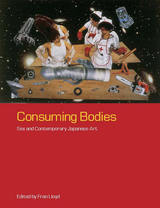
Sex and consumerism in art are inextricably linked to issues of power, gender, class and race, and move beyond the gallery into private and public realms, where the complex relationships surrounding sexuality and commerce are directly encountered in both the fast-changing marketplace and in the dominant ideologies within Japanese society.
With over 150 intriguing illustrations, Consuming Bodies provides a wide-ranging perspective on an under-researched area of contemporary Japanese art practice and the critical issues it uncovers.

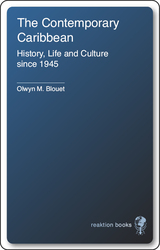
When Americans seek an escape from the worries and dilemmas of everyday life, the crystal blue waters and white sands of the Caribbean islands seem like the answer to a prayer. Yet this image of a tourist’s paradise hides a tumultuous history marked by strife and division over race, political power, and economic inequality. Olwyn Blouet explores the story of “the Caribbean” over the last 50 years, revealing it to be a region positioned at the heart of some the most prominent geopolitical issues of modern times.
Navigating a rich mélange of cultures and histories, Blouet unearths a complex narrative that is frequently overlooked in histories of the Americas. In stark contrast to widely-read guidebooks, this chronicle unflinchingly probes two strikingly different worlds in the Caribbean islands—those of the haves and the have-nots—created by the volatile mixture of colonial politics, racial segregation, and economic upheaval. The strategic political relations between Caribbean nations, Cuba in particular, and the world powers during the Cold War; the economic transformations instigated by tourism; and the modernizing efforts of Caribbean nations in order to meet the demands of a globalizing twenty-first century market are among the numerous issues explored by Blouet in her efforts to redress the historical record’s imbalance. The Contemporary Caribbean also explores the proud histories of the region's many nations in sports such as cricket and baseball, as well as their famed cuisines, and the uneasy balance today between local traditions and the vestiges of colonial influence.
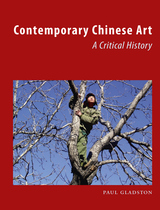
Providing a critical mapping of ideas and practices that have shaped the development of Chinese art, Gladston shows how these combine to bind it to the structure of power and state both within and outside of China. Focusing principally on art produced by artists from mainland China—including painting, film, video, photography, and performance—he also discusses art created in Taiwan, Hong Kong, Macau, and diasporic communities. Illustrated with 150 images, Contemporary Chinese Art unravels the complexities of politics, artistic practice, and culture in play in China’s art scene.
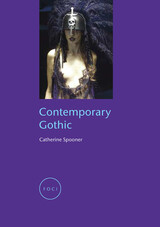
Modern Gothic culture alternately fascinates, horrifies, or bewilders many of us. We cringe at pictures of Marilyn Manson, cheer for Buffy in Buffy the Vampire Slayer, and try not to stare at the pierced and tattooed teens we pass on the streets. But what is it about this dark and morbidly morose aesthetic that fascinates us today? In Contemporary Gothic, Catherine Spooner probes the reasons behind the prevalence of the Gothic in popular culture and how it has inspired innovative new work in film, literature, music, and art.
Spooner traces the emergence of the Gothic subculture over the past few decades and examines the various aspects of contemporary society that revolve around the grotesque, abject, and artificial. The Gothic is continually resituated in different spheres of culture, she reveals, as she explores the transplantation of the “street” Goth style to haute couture runway looks by fashion designers. The Gothic also appears in a number of surprisingly diverse representations, and Spoonerconsiders them all, from the artistic excesses of Jake and Dinos Chapman to the fashions of Alexander McQueen, and from the mind-bending films of David Lynch to the abnormal postmodern subjects of Joel-Peter Witkin’s photography.
In an engaging way, Contemporary Gothic argues that this style ultimately balances a number of contradictions—the grotesque and incorporeal, authentic self-expression and campiness, mass popularity and cult appeal, comfort and outrage—and these contradictions make the Gothic a crucial expression of contemporary cultural currents. Whether seeking to understand the stories behind the TV show Supernatural or to extract deeper meanings from modern literature, Contemporary Gothic is a lively and virtually unparalleled study of the modern Gothic sensibility that pervades popular culture today.
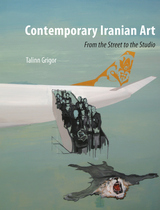
Exploring the world of galleries, museums, curators, and art critics, Grigor moves between subversive and daring art produced in private to propaganda art, martyrdom paraphernalia, and museum interiors. She examines the cross-pollination of kitsch and avant-garde, the art market, state censorship, the public-private domain, the political implications of art, and artistic identity in exile. Providing an astute analysis of the workings of artistic production in relation to the institutions of power in the Islamic Republic, this beautifully illustrated book is essential reading for anyone interested in Iranian history and contemporary art.

This book showcases a collection of the most visually captivating, intriguing, and often overlooked examples of Korean art. Mina Kim highlights the artistic output of the 1960s and ’70s through today, providing crucial aesthetic and political context for understanding the work. Key ideas that structure the book include performance, gender, identity, internationalism, and the evolution of multimedia. By placing artistic expression at the core of Korean culture and society, this book sheds new light on the role of Korea’s contributions to global visual culture.
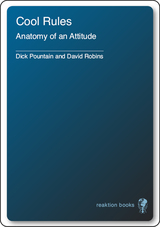
The contemporary Cool attitude is barely 50 years old, but its roots are older than that. Cool Rules traces Cool's ancient origins in European, Asian, and African cultures, its prominence in the African-American jazz scene of the 1940s, and its pivotal position within the radical subcultures of the 1950s and '60s. Pountain and Robins examine various art movements, music, cinema, and literature, moving from the dandies and flâneurs of the eighteenth and nineteenth centuries through to the expropriation of a whole cultural and psychological tradition by the media in the 1980s and '90s. What began as a rebellious posture adopted by minorities mutated to become mainstream itself. Cool is now primarily about consumption, as cynical advertisers have seized on it to create a constantly updated bricolage of styles and entertainments designed to affect the way people think about themselves and their society.
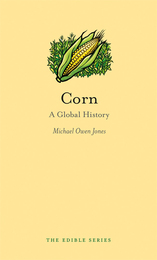
The book traces corn back to its Mesoamerican roots, following along as it was transported to the Old World by Christopher Columbus, and then subsequently distributed throughout Europe, Africa, and Asia. Jones takes readers into the deliciously disparate culinary uses of corn, including the Chilean savory pie pastel de choclo, Japanese corn soup, Mexican tamales, a Filipino shaved ice snack, and the South African cracked hominy dish umngqusho, favored by Nelson Mandela. Covering corn’s controversies, celebrations, and iconic cultural status, Jones interweaves food, folklore, history, and popular culture to reveal the vibrant story of a world staple.

This book is the first definitive history of the corridor, from its origins in country houses and utopian communities in the seventeenth and eighteenth centuries, through reformist Victorian prisons, hospitals, and asylums, to the “corridors of power,” bureaucratic labyrinths, and housing estates of the twentieth century. Taking in a wide range of sources, from architectural history to fiction, film, and TV, Corridors explores how the corridor went from a utopian ideal to a place of unease: the archetypal stuff of nightmares.

Cosplay, born from the fusion of “costume” and “play,” transcends mere dress-up by transforming enthusiasts of TV shows, movies, books, or video games into living embodiments of their cherished characters. This book is a close exploration of the vibrant world of cosplay, showing what makes it so captivating for so many. Vivian Asimos frames cosplay as an enactment and embodiment of mythology, revealing its inherent complexity, and in so doing, provides valuable insight into cosplayers’ experiences.
Exploring cosplay performances, the skills involved, and its community, she shows how cosplayers build a strong connection to the characters and stories they treasure, and ultimately how they are constructing their own identities.

Five years after 9/11, we question whether or not terrorist activity has actually decreased. Terrorist networks still span the globe and, some argue, they are more powerful than ever. Yet in this era of rigid security and U.S.-led wars on multiple continents, countries are at odds about how to deal with the looming threat—and chaotic aftermath—of terrorist acts. In Countering Terrorism, Rohan Gunaratna and Michael Chandler sift through political commentary, military maneuvering, and the tangled web of international diplomacy to put us on alert: The world has missed a prime opportunity to crush terrorism.
Chandler and Gunaratna are among the world’s foremost experts on international terrorism, having logged between them over forty years of firsthand experience in the field and planning rooms, analyzing and dealing with an unceasing succession of terrorist threats and conflicts. Chandler and Gunaratna employ their unparalleled expertise to probe the catastrophic attacks so indelibly seared into the history of the early twenty-first century, from 9/11 to the Madrid bombings to deadly strikes in Afghanistan, Iraq, Pakistan, Palestine, and elsewhere. They ask the hard questions we never hear on nightly newscasts: Why has the overall response to terrorism after 9/11 been “so abysmal, slow, piecemeal, and to a large extent far from effective?” Why have some countries, despite international criticism, disregarded universally accepted humanitarian norms when handling the prosecution of terrorist suspects?
By allowing politics to trump the need for trans-national cooperation, the authors contend, the international community—and particularly the United States—has squandered an opportunity to combat terrorism with a united and powerful force. Thus what should have been a watershed moment in international relations vanished as effective long-term policies were shunned in favor of short-term political expediency.
From arguing the Iraq War has been a “strategic defeat” to Afghanistan’s struggle against the Taliban to the rapidly growing geopolitical role of Iran, Countering Terrorism investigates the reality of the changes that followed the bombings and attacks and examines global terrorism from every angle, including the social and economic underpinnings of terror networks. Scholars, experts, and citizens have appealed for a re-evaluation of today’s increasingly ineffective “War on Terror” policies, and Chandler and Gunaratna answer this call with clear and concise proposals for future dealings with global terrorism.
The projected end results of the wars, terrorist attacks, and political upheavals tearing nations apart today are rarely anything but bleak. But Countering Terrorism challenges today’s chaotic status quo, offering penetrating analysis and a radically new perspective essential to grappling with the complexities of terrorist activity and counterintelligence today.
"A timely book that fills a lacuna in the counter-terrorism literature and has to be on the bookshelf of any decision-maker, scholar, student and anyone who is interested in understanding the current and the future trends of international terrorism and the strategies that has to be taken to combat this threat."--Dr. Boaz Ganor, author of The Counter-Terrorism Puzzle: A Guide for Decisionmakers
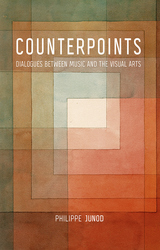
The book’s main focus is music and its relationship with painting, sculpture, and architecture. Philippe Junod draws on theoretical and practical examples to show how different art movements throughout history have embraced or rejected creative combinations. He explains how the Renaissance, neoclassicism, and certain brands of modernism tried to claim the purity of each mode of expression, while other movements such as romanticism, symbolism, and surrealism called for a fusion of the arts. Counterpoints is a unique cultural history, one that provides a critical understanding of a popular but previously unheralded art form.
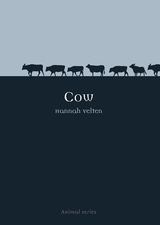
From the milk we drink in the morning, to the leather shoes we slip on for the day, to the steak we savor at dinner, our daily lives are thoroughly bound up with cows. Yet there is a far more complex story behind this seemingly benign creature, which Hannah Velten explores here, plumbing the rich trove of myth, fact, and legend surrounding these familar animals.
From the plowing field to the rodeo to the temple, Velten tracks the constantly changing social relationship between man and cattle, beginning with the domestication of aurochs around 9000 BCE. From there, Cow launches into a fascinating story of religious fanaticism, scientific exploits, and the economic transformations engendered by the trade of the numerous products derived from the animal. She explores in engaging detail how despite cattle’s prominence at two ends of a wide spectrum: Hinduism venerates the cow as one of the most sacred members of the animal kingdom, while beef is a prized staple of the American diet. Thought provoking and informative, Cow restores this oft-overlooked animal to the nobility it richly deserves.
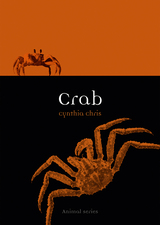

Henry Fuseli (1741–1825) was one of the eighteenth century’s most provocative and inventive artists. He is best known for his painting The Nightmare, which channeled a new form of gothic imagery for the Romantic age. This engaging study of the artist’s career unveils Fuseli’s complexities, navigating contradictions between literary and painted works, sacred and secular themes, and traditional patronage versus competitive exhibitions. Plotting Fuseli’s trajectory from Zurich to Paris, Rome, and ultimately London, Creator of Nightmares paints an image of Fuseli as an astute marketer and self-proclaimed genius who transformed himself from a priest to an Enlightenment writer, a mercurial force in the art world, and finally a revered teacher.
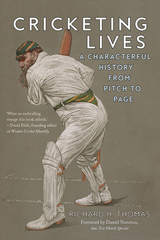
Cricket is defined by the characters who have played it, watched it, reported it, ruled upon it, ruined it, and rejoiced in it. Humorous and deeply affectionate, Cricketing Lives tells the story of the world’s greatest and most incomprehensible game through those who have shaped it, from the rustic contests of eighteenth-century England to the spectacle of the Indian Premier League. It’s about W. G. Grace and his eye to his wallet; the invincible Viv Richards; and Sarah Taylor, “the best wicketkeeper in the world.” Richard H. Thomas steers a course through the despair of war, tactical controversies, and internecine politics, to reveal how cricket has always warmed our hearts as nothing else can.

“Brilliantly researched and written.”—Jon Snow, Channel 4 News
“A comprehensive and intelligible account of the elusive world of hacking and cybercrime over the last two decades. . . . Lively, insightful, and, often, alarming.”—Ewen MacAskill, Guardian
On May 4, 2000, an email that read “kindly check the attached LOVELETTER” was sent from a computer in the Philippines. Attached was a virus, the Love Bug, and within days it had been circulated across the globe, paralyzing banks, broadcasters, and businesses in its wake, and extending as far as the UK Parliament and, reportedly, the Pentagon. The outbreak presaged a new era of online mayhem: the age of Crime Dot Com. In this book, investigative journalist Geoff White charts the astonishing development of hacking, from its conception in the United States’ hippy tech community in the 1970s, through its childhood among the ruins of the Eastern Bloc, to its coming of age as one of the most dangerous and pervasive threats to our connected world. He takes us inside the workings of real-life cybercrimes, drawing on interviews with those behind the most devastating hacks and revealing how the tactics employed by high-tech crooks to make millions are being harnessed by nation states to target voters, cripple power networks, and even prepare for cyber-war. From Anonymous to the Dark Web, Ashley Madison to election rigging, Crime Dot Com is a thrilling, dizzying, and terrifying account of hacking, past and present, what the future has in store, and how we might protect ourselves from it.
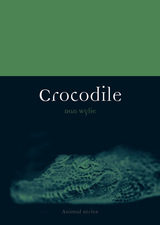

In this book, Alex Coles explores the history of the crooner—someone who sings close to the mic in a soft style—in popular music from the 1950s to the present. Each chapter focuses on how one song by one artist contributes to the image of the crooner in the popular imagination. The book describes the rich diversity of crooners throughout music history, including artists in disco, rock, hip-hop, and more such as Frank Sinatra, Scott Walker, Barry White, David Bowie, Bryan Ferry, Tom Waits, Grace Jones, Ian McCulloch, Nick Cave, and Nas. Ultimately, Coles shows how the crooner continues to connect listeners with their hidden feelings.
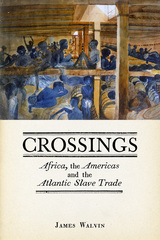
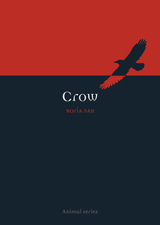
Sax takes readers into the history of crows, detailing how in a range of cultures, from the Chinese to the Hopi Indians, crows are bearers of prophecy. For example, thanks in part to the birds’ courtship rituals, Greeks invoked crows as symbols of conjugal love. From the raven sent out by Noah to the corvid deities of the Eskimo, from Taoist legends to Victorian novels and contemporary films, Sax’s book ranges across history and culture and will interest anyone who has ever been intrigued, puzzled, annoyed, or charmed by these wonderfully intelligent birds.
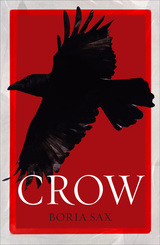
Sax takes readers into the history of crows, detailing how in a range of cultures, from the Chinese to the Hopi Indians, crows are bearers of prophecy. For example, thanks in part to the birds’ courtship rituals, Greeks invoked crows as symbols of conjugal love. From the raven sent out by Noah to the corvid deities of the Eskimo, from Taoist legends to Victorian novels and contemporary films, Sax’s book ranges across history and culture and will interest anyone who has ever been intrigued, puzzled, annoyed, or charmed by these wonderfully intelligent birds.
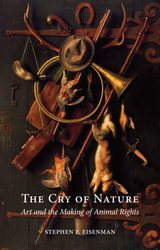
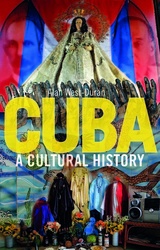
Cuba: A Cultural History tells the story of Cuba’s history through an exploration of its rich and vibrant culture. Rather than offer a timeline of Cuban history or a traditional genre-by-genre history of Cuban culture, Alan West-Durán invites readers to enter Cuban history from the perspective of the island’s uniquely creative cultural forms. He traces the restless island as it ebbs and flows with the power, beauty, and longings of its culture and history.
In a world where revolutionary socialism is an almost quaint reminder of the decades-old Cold War, the island nation remains one of the few on the planet guided by a Communist party, still committed to fighting imperialism, opposed to the injustices of globalization, and wedded to the dream of one day building a classless society, albeit in a distant future. But as this book shows, Cuba is more than a struggling socialist country—it is a nation with a complex and turbulent history and a rich and varied culture.
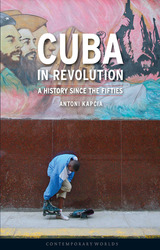
Cuba In Revolution takes the Cuban Revolution as its starting point, analyzing social change, its benefits and disadvantages, popular participation in the revolution, and the development of its ideology. Kapcia probes into Castro’s rapid rise to national leader, exploring his politics of defense and dissent as well as his contentious relationship with the United States from the beginning of his reign. The book also considers the evolution of the revolution’s international profile and Cuba’s foreign relations over the years, investigating issues and events such as the Bay of Pigs crisis, Cuban relations with Communist nations like Russia and China, and the flight of asylum-seeking Cubans to Florida over the decades. The collapse of the Soviet Union between 1989 and 1991 catalyzed a severe economic and political crisis in Cuba, but Cuba was surprisingly resilient in the face of the catastrophe, Kapcia notes, and he examines the strategies adopted by Cuba over the last two decades in order to survive America’s longstanding trade embargo.
A fascinating and much-needed examination of a country that has served as an important political symbol and diplomatic enigma for the twentieth century, Cuba In Revolution is a critical primer for all those interested in Cuba’s past—or concerned with its future.

The cuckoo is peculiar for inspiring such divergent ideas: a symbol of foolishness to both Aristophanes and Cocoa Puffs, a reliable harbinger of spring and the hours of a cuckoo clock, and the source of innumerable innuendos inspired by a habit of laying eggs in others’ nests. In this short, entertaining book, Cynthia Chris explores both the natural and cultural history of the cuckoo as well as the many stories told throughout the centuries about this fascinating bird.

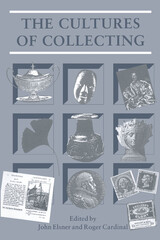
There are essays on the Neoclassical architect Sir John Soane, Sigmund Freud and Kurt Schwitters, one of the masters of collage. Others examine imperialist encounters with remote cultures – the consquitadors in America in the sixteenth century, and the British in the Pacific in the eighteenth – and the more recent collectors of popular culture, be they of Swatch watches, Elvis Presley memorabilia or of packaging and advertising.
With essays by Jean Baudrillard, Thomas DaCosta Kaufmann, Nicholas Thomas, Mieke Bal, John Forrester, John Windsor, Naomi Schor, Susan Stewart, Anthony Alan Shelton, John Elsner, Roger Cardinal and an interview with Robert Opie.
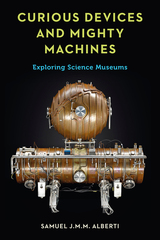
Science museums have paradoxes at their core. They must be accessible and fun while representing increasingly complex science. They must be both historic and contemporary. Their exhibits attract millions, but most of their objects remain in deep storage, seldom seen. This book delves into these conflicts, revealing the secret lives of science curators; where science objects come from and who uses them; and, ultimately, what science museums are for. With an insider’s eye, Samuel J. M. M. Alberti exposes the idiosyncratic past and intriguing current practices of these institutions—and sets out a map for their future.
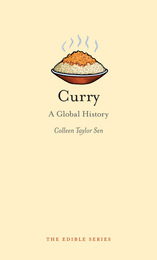
Curry is one of the most widely used—and misused—terms in the culinary lexicon. Outside of India, the word curry is often used as a catchall to describe any Indian dish or Indian food in general, yet Indians rarely use it to describe their own cuisine. Curry answers the question, “What is curry?” by giving a lively historical and descriptive account of a dish that has many incarnations.
In this global history, food writer Colleen Taylor Sen describes in detail the Anglo-Indian origins of curry and how this widely used spice has been adapted throughout the world. Exploring the curry universe beyond India and Great Britain, her chronicles include the elegant, complex curries of Thailand; the exuberant curry/rotis of the Caribbean; kari/raisu, Japan’s favorite comfort food; Indonesian gulais and rendang; Malaysia’s delicious Nonya cuisine; and exotic Western hybrids such as American curried chicken salad, German currywurst, and Punjabi-Mexican-Hindu pizza. Along the way, Sen unravels common myths about curry and Indian food and illuminates the world of curry with excerpts from popular songs, literary works, historical and modern recipes, and illustrations depicting curry dishes and their preparations.
A vibrant, flavorful book about an increasingly popular food, Curry will find a wide audience of cooking enthusiasts and hungry fans of Indian food.
READERS
Browse our collection.
PUBLISHERS
See BiblioVault's publisher services.
STUDENT SERVICES
Files for college accessibility offices.
UChicago Accessibility Resources
home | accessibility | search | about | contact us
BiblioVault ® 2001 - 2024
The University of Chicago Press









